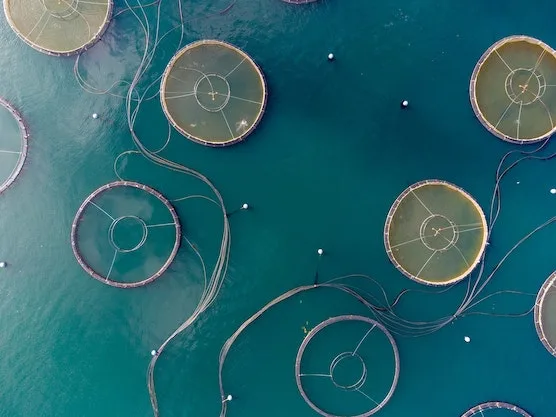Using Genomics for Sustainable Aquaculture

University of Idaho researchers partnered with government agencies and companies to better understand fish genetics and metabolism while also has addressing an urgent need to improve fish yields for better food security.
The global demand for seafood is rapidly increasing, and the capture of wild fish and shellfish, also known as ‘capture fishery’, has already been fully exploited. Capture fishery currently meets about half of the demand, so future demand growth must be met by increasing aquaculture production—the breeding, feeding, and harvesting of fish, shellfish, and other aquatic organisms. Presently, the feed primarily used by the aquaculture industry is fish meal, which is made from fish typically not consumed by people. Fish meal is crucial for many fish that are highly valued as a food source, including trout and salmon, because they are carnivorous and cannot thrive on currently available plant-based feeds. Unfortunately, the demand for fish meal has far exceeded the supply. For this reason, an alternative, sustainable solution is needed.

To address this problem, Dr. Ronald Hardy and research colleagues at the Aquaculture Research Institute at the University of Idaho partnered with researchers within the United States Department of Agriculture (USDA) and Cargill Corporation, as well as other government agencies and companies. Their work over two decades took two approaches. Firstly, they developed a nutritious vegetarian feed for farm-raised fish to meet the demand for fish meal from the aquaculture industry. Secondly, they selectively bred trout strains that flourish when fed a plant-based diet. The researchers worked to understand the genetic, metabolic, and physiological factors that are responsible for the increased performance in specific trout strains.
The project had long-term objectives to further understand fish genetics and metabolism while also has addressing an urgent need to improve fish yields for better food security. As a result of this work, after 8 generations of selective breeding, the selected trout grow twice as fast on either a fish meal or plant-based diet, compared to non-selected trout strains. The primary global impact of this project is improved food security, made possible by the development of new strains of fish and sustainable plant-based feed that are well suited for the growing aquaculture industry.
Dr. Ronald Hardy, Professor Emeritus in the Department of Animal, Veterinary and Food Sciences at the University of Idaho, is an expert in fish nutrition. Prior to his retirement in 2019, he served as the Director of the Aquaculture Research Institute (ARI), which was established in 1988 with congressional funding from the United States Agriculture Research Service to provide a focus for aquaculture research. Over the two decades, the ARI has carved out a niche in fish nutrition using new genomics tools and has conducted many HIBAR research projects, including some with tribal communities and local and global industries in areas where basic science adds value to the partnership. Recent projects have been aimed at understanding the ability of fish populations to adapt to changing environmental conditions, identifying strains of fish that are better suited to new conditions and can be introduced within specific regions, understanding and reducing environmental interactions between aquaculture and capture fisheries, and reducing conflicts between recreational and food-producing uses of coastal lands. Today, the ARI attracts graduate students from around the world, who bring aquaculture challenges and knowledge from their region.
This long-term collaboration is an excellent example of a HIBAR project. The research team sought to discover new knowledge about fish genetics, metabolism, and nutrition on a basic level, while also striving for more sustainable aquaculture practices to improve world food security. The integrated nature of this project is exemplified by one of the key outcomes: the selected strain of trout is not only valuable for aquaculture, it is also an excellent model that allows researchers to explore physiological and genetic mechanisms of amino acid metabolism that are responsible for the observed increased performance. The work was co-led by academic researchers from the University of Idaho and ARI and external partners within government agencies and companies. The strong partnership relationships that led to the impactful results grew over time, as a result of shared interest in common goals.